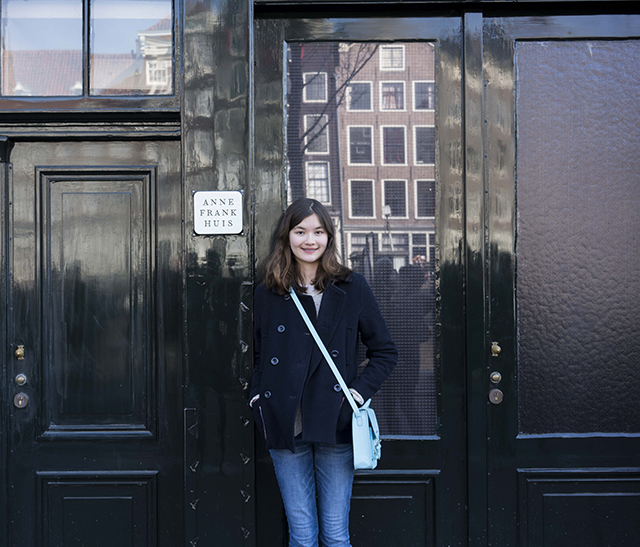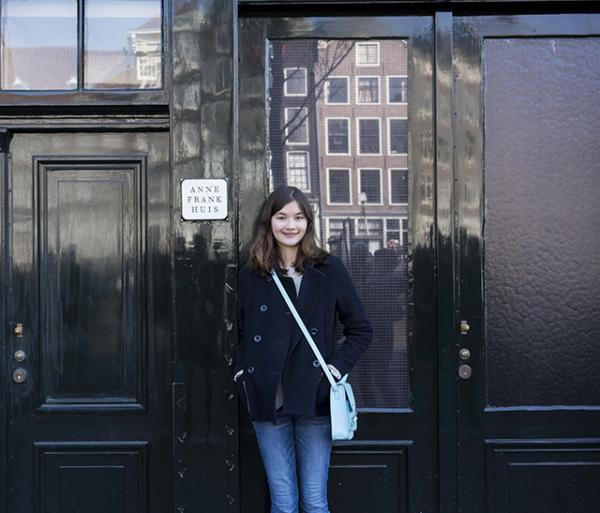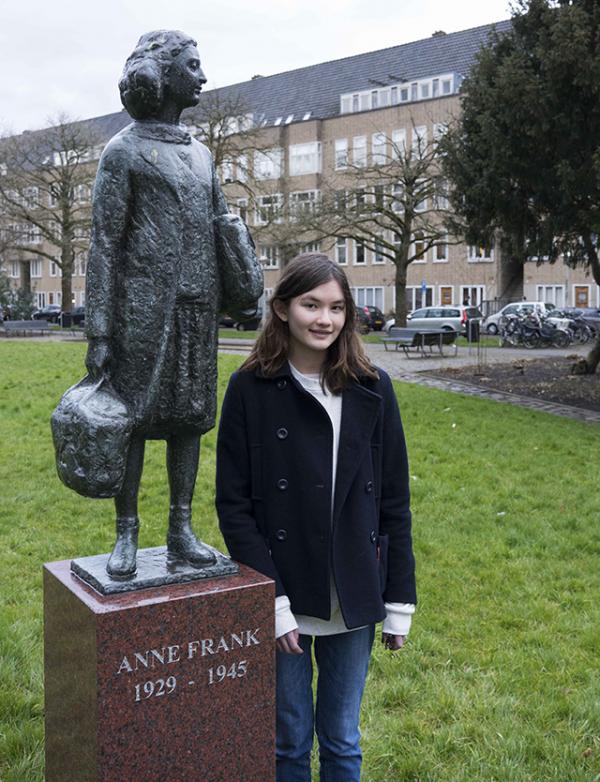KID REPORTERS’ NOTEBOOK
Visiting Anne Frank’s Amsterdam


Charlotte outside the house in which Anne Frank and her family hid during World War II
In 1945, Anne Frank died at a concentration camp in Nazi Germany. She was 15. Her diary, published two years after her death, tells the story of the hope she clung to as her family hid in a tiny attic in the Netherlands, while German soldiers hunted down Jewish families like hers. Anne’s diary has made her one of the most famous victims of the Holocaust, which claimed millions of lives during World War II.
I recently traveled to Amsterdam in the Netherlands to visit the Anne Frank House, which was turned into a museum in 1960. Anne and her family went into hiding there in 1942, as war raged across Europe. They stayed until 1944, when Nazi police burst in and sent them to concentration camps.
Anne’s father, Otto Frank, survived, but Anne died in the Bergen-Belsen camp in Nazi Germany, along with her mother, Edith, and her sister, Margot.
When Otto Frank published Anne’s diary in 1947, he fulfilled her dream of becoming a writer. The story of a young girl's idealism at a time of war and savagery became a worldwide bestseller. It has sold millions of copies and been translated into more than 70 languages.
UNDERSTANDING ANNE'S LIFE
In 2015, a record 1.3 million people visited the Anne Frank House. The museum chronicles the details of Anne's life, which was both ordinary and extraordinary, showing her as a real person with hopes and dreams like every young teen.
The museum leads visitors through the hiding space into a separate building with videos, artifacts, and books. In the modern portion of the museum, there are images of Anne and quotes from her diary, including one of the most famous: “In spite of everything, I still believe that people are really good at heart.”
Lola Siebert, 13, of New York City, found her visit to the museum deeply moving. “The diary just seemed like a story, but as I entered Anne’s room, the whole thing became real,” Lola said. “It was interesting how Otto Frank decided to leave the house as it was.... He wanted to show people how ruthless the [Nazis] were, and how much they took from his family.”
Lola’s twin brother, Aaron, said that it was important to visit the museum because “in school, you learn the basic ideas of the Holocaust, but you don’t learn what it was actually like to experience it.”
SEEING THE DIARY
Anne’s original diary is on display in the museum, and visitors can watch videotaped interviews of people who knew her. During my visit, many people were moved to tears after bearing witness to a young girl’s life cruelly cut short.

Charlotte next to a statue across the street from Anne’s apartment
The Anne Frank House reinforces a powerful message: Do not judge others based on race, nationality, or religion. It also helps to keep Anne's story alive, something that she would have wanted. As she wrote in her diary: “I don’t want to have lived in vain like most people. I want to be useful or bring enjoyment to all people, even those I’ve never met. I want to go on living even after my death.”
